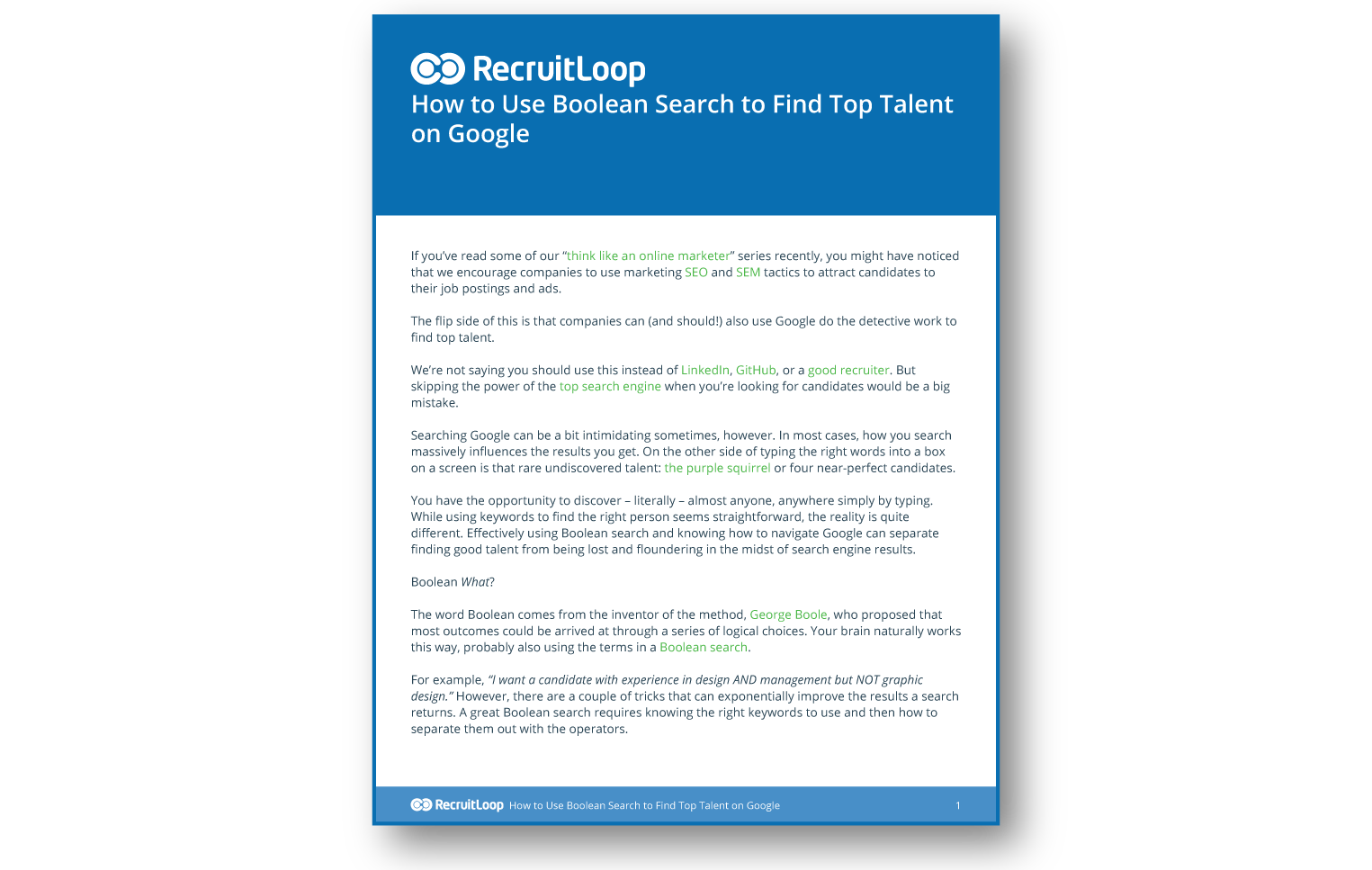

This operator is very prevalent among other general searches, like looking for a specific interview on the internet but you only remember a snippet of it or a song to which you only remember one or two lines of the lyric. The quotes or the quotations operator is only used when you want an exact phrase or word or criteria included in your search results verbatim.

So if you add a bracket around one of the operator queries, like ‘computer AND (engineer OR developer) -hiring’ the search engine algorithm will look for candidates who are either engineers or developers, both of whom are proficient in computer sciences. This could lead to unsatisfactory scouting of recruits. This operator mainly comes into play when you use other operators in your search query.įor example, if you search for something like- ‘computer AND engineer OR developer NOT hiring’ this sends your search engine into a tizzy of confusion as it does not have clear instructions as to what results should be signified before others. They help in grouping and prioritizing the criteria using which you are looking to recruit candidates into your organization. Much like mathematics, the bracket/ parentheses operator is used to provide an order of importance to your keywords in your search string. NOT HIRING= -hiring Operator 4: Brackets/Paranthesis Here’s how the not operator is used in such cases- a (-) sign is used before the keyword without any space when searching on Google or LinkedIn One of the best examples to illustrate the use of the NOT operator is to filter new candidates looking for open positions in organizations from existing job seekers wishing to change their current job roles by applying to these vacant positions. This operator helps you filter your results to a great extent, and is perhaps has the most common and frequent applications from among all the boolean operators. The NOT operator is used to exclude results that include unwanted criteria that you look for in a candidate. This will show you a list of candidates who are only clinical technicians, or only biomedical engineers, or are qualified for both posts. For example, if you wish to recruit somebody for handling equipment in your clinic you would either look for a clinical technician or a biomedical engineer using the OR operator- ‘clinical technician OR biomedical engineer’. OR operator is also used when you want to include multiple criteria in your search query but you only need one of the criteria to be satisfied in your ideal candidate. For example, if as a recruiter you are looking to recruit a graphic designer, you could use the AND operator to search for ‘graphic AND designer’ which would imply that your vacant job role is for someone who is proficient in graphic editing and is a trained designer. Operator 1: ANDĪND is an operator that is used when you want to include multiple criteria all of which need to be fulfilled by the candidate for whom you are looking. This separates the operator from other keywords in your query string. They can be used multiple times in a search query and have to be written in the upper case. To create the aforementioned complex search strings, 6 basic operators come in extremely handy. This streamlines and optimizes the recruitment process.īasic Boolean Search Operators that every Recruiter should know about

Using the operators creates a ‘complex search string’ through which the recruiter/ employer can pick the ideal candidate over a range of relevant ones. It functions as an advanced search wherein you can include or exclude specific words and tags using the boolean operators to select candidates fit for a unique work position. This query methodology was invented by George Boole who was an English mathematician and has greatly influenced the evolution and optimization of search engines such as Google.īoolean Search allows a recruiter to effectively identify candidates best fit for a certain job role. How can this task be simplified? By using the Boolean Search Algorithm! What is the Boolean Search Algorithm?īoolean search, in simple terms, provides a filter of sorts that narrows down the search results according to your specifications using tools called the ‘operators’ which will be discussed further in this article.

Studies show that recruiters spend an average of 13 hours looking for candidates for one single job role. To select the correct candidates for the correct job, especially candidates with a great quality of work and high caliber, is a feat in and of itself. Today’s careers and jobs are highly competitive, and the job roles demand an extremely specific skill set from the candidates.


 0 kommentar(er)
0 kommentar(er)
